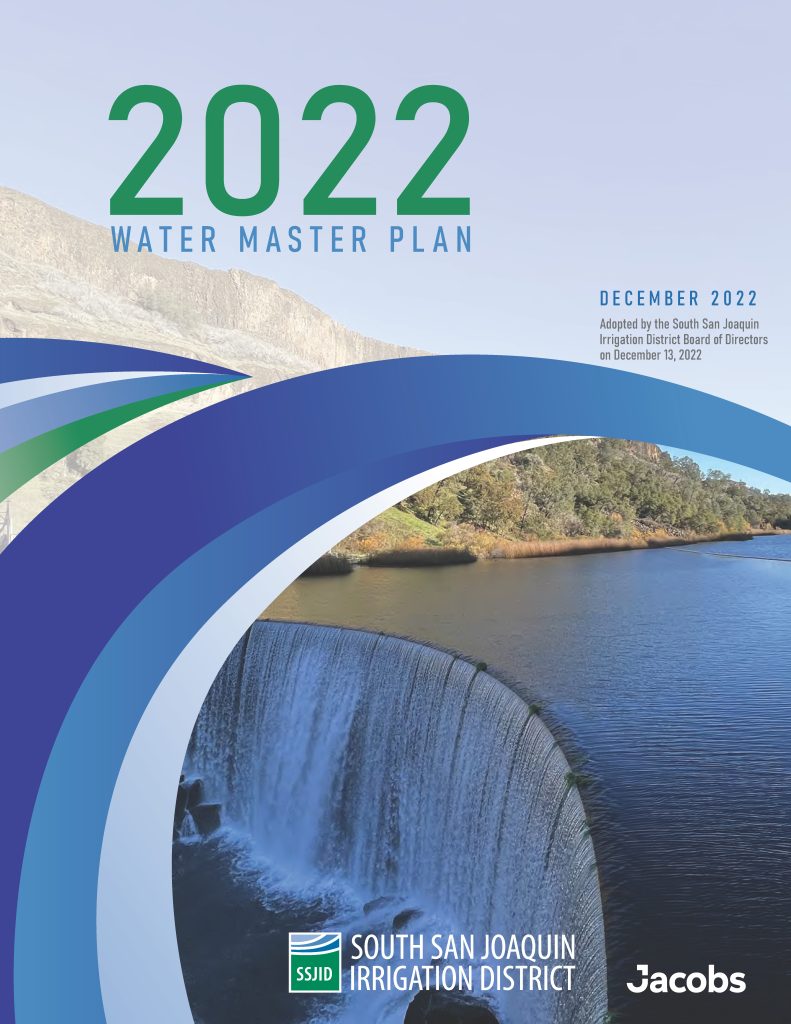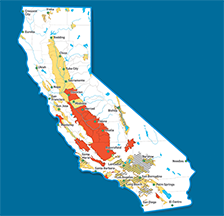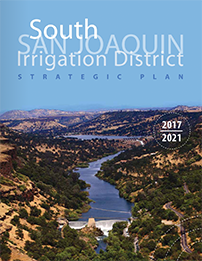1909
SSJID was established to provide a reliable and economical source of irrigation water for agricultural use in and around Escalon, Manteca and Ripon.
1913
In conjunction with Oakdale Irrigation District (OID), SSJID constructed a dam above Knights Ferry named after SSJID Board President Benjamin A. Goodwin.
1916
SSJID encountered a shortage of water in 1915 due to little rain and snow in the previous winter. To minimize the damage to the water-starved crops if faced with similar shortages in the future, SSJID constructed Woodward Reservoir near Oakdale. This increased SSJID’s storage capacity by 36,000 acre feet.
1926
SSJID and OID joined forces again to build Melones Reservoir. Melones Reservoir held 110,000 acre feet and could irrigate 144,000 acres of land in both districts. Years later, the federal government took over Melones and greatly increased its capacity. The water storage facility is now known as New Melones Reservoir and allows the two districts rights to the first 600,00 acre feet that flows into New Melones Reservoir each water year.
1948-1957
In 1948 SSJID and OID jointly founded the Tri-Dam Project. Tri-Dam had two functions: to increase water storage to meet irrigation obligations and to add hydropower production at a low cost and substantial benefit. Construction on the Tri-Dam reservoirs — Donnells, Beardsley and Tulloch — began in 1955 and became operational in just two years. The Tri-Dam Project was completed in 1957.
1989
SSJID went online with a SCADA (Supervisory Control and Data Acquisition) system and automation technology to operate the Main Distribution Canal.
1992
SSJID constructed the small VanGroningen Reservoir east of Carrollton Road in Ripon and, in 1996, a larger control room nearby.
1993
SSJID, along with Oakdale Irrigation District, began a fishery research and monitoring program to evaluate juvenile Chinook salmon response to pulse flows. Further years of research have included monitoring salmon abundance and migration timing, spawning nest surveys, and a native fish plan seeking to estimate the abundance, distribution and diet of non-native predators and the impact on juvenile salmon survival.
2003
SSJID completed the Northwest Project, a portion of the System Improvements for Distribution Efficiency Project (S.I.D.E), which consisted of a main interceptor pipeline, a reservoir near the “R” canal, connections to the “R” canal, and pumps and screens on the existing laterals.
2005
The District responded to unprecedented urban growth and began providing domestic water service to South San Joaquin County cities with its state-of-the-art membrane filtration water treatment plant at the foot of Woodward Reservoir, named after the late SSJID board member Nick C. DeGroot. Also in 2005, the Board of Directors unanimously voted to proceed with the attempt to purchase PG&E’s distribution network within its service area and provide electrical service to Manteca, Escalon and Ripon.
2009
In 2009, as SSJID celebrated 100 years of providing reliable service and meeting customer needs, we completed construction of the 1.4-megawatt Robert O. Schulz Solar Farm on a site adjacent to the Nick C. DeGroot Water Treatment Plant. The electricity generated is used to power the plant.
2012
Completion of the Irrigation Enhancement Project resulted in more efficient water use while providing area growers using micro, drip and sprinkler systems (pressure systems) with individualized, automated irrigation access through online and mobile technology. The unique system, servicing 3,800 acres of farmland near Ripon, was constructed over a three-year period.
2014
SSJID won approval from the San Joaquin Local Area Formation Commission (LAFCo) to have the right to provide retail electric service in its territory in a hard-fought regulatory battle against PG&E.
2016
SSJID made a formal offer to buy PG&E’s electric distribution system within the SSJID boundaries, which PG&E rejected. SSJID’s Board of Directors held a public hearing and adopted a Resolution of Necessity to proceed with filing a condemnation lawsuit in court, authorizing the District to move forward with acquiring PG&E’s distribution system that brings power to individual homes and businesses within SSJID’s boundaries through condemnation litigation.
 Our Mission
Our Mission
SSJID provides the utmost value for its agricultural, urban, and business community by protecting and delivering vital resources with exceptional service.
 Our Vision
Our Vision
As a premier organization, South San Joaquin Irrigation District is passionately focused on delivering high quality water and power that are integral to the communities we serve, while leading in innovation and sustaining a deep respect for our history, our employees, and our environment.







